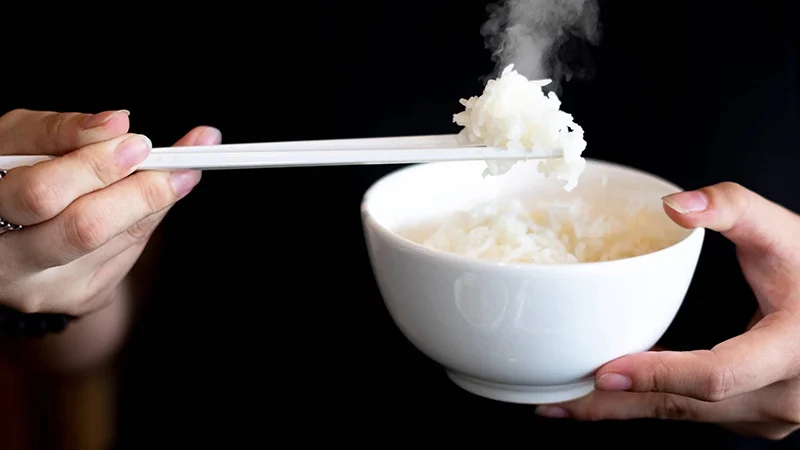Features
Hidden influence of self-imposed rules on human behaviour

Breaking boundaries:

Cultural Differences in Dining Etiquette: A Reflection on Personal Experiences
During my visit to Chengdu, a beautiful city in China, last November, I was accompanied by a friend who was well-versed in the local customs. One afternoon, while having lunch with a group of friends, I instinctively attempted to manage some food with my fingers. To my surprise, my Chinese friends reacted with visible discomfort and disapproval. They were adept at using chopsticks, skillfully handling complex food items such as grilled meat and bony fish. However, I struggled with chopsticks, lacking the dexterity to manage intricate dishes effectively. The reaction of my Chinese companions underscored the strong cultural emphasis on proper utensil use in China. In Chinese culture, using chopsticks is not only a matter of practicality but also a sign of etiquette and respect. Eating with fingers, unless explicitly part of a particular regional cuisine, is generally perceived as unhygienic or inappropriate in formal settings.
A similar experience occurred in Sri Lanka while I was working for a bank. At a formal dinner, in a well-known restaurant in Colombo, a few colleagues and I opted to eat with our fingers, a common practice in Sri Lankan culture, particularly for rice-based dishes. However, the General Manager expressed his disapproval, making disparaging remarks and insisting that we use a fork and spoon instead. This reaction reflected the influence of Western dining etiquette in professional and formal settings in Sri Lanka. British colonial rule significantly impacted Sri Lankan dining customs, leading to the adoption of Western-style utensils in formal and corporate environments. Despite the cultural acceptability of eating with fingers in many local households, there is an increasing preference for Western table manners in urban and elite circles.
These experiences highlight the intersection of cultural expectations and globalization. In many Asian cultures, including India, Sri Lanka, and parts of the Middle East, eating with hands is a long-standing tradition associated with sensory engagement and respect for food. Conversely, in East Asian countries, such as China, Japan, and Korea, chopsticks are the primary utensils, and using hands is generally frowned upon. Western dining etiquette, emphasizing cutlery, such as forks, knives, and spoons, has gained prominence globally, often being regarded as a standard for formal dining.
Breaking Self-Imposed Rules: Challenging Cultural and Social Norms
Humans often create and adhere to self-imposed rules that shape their behaviours, beliefs, and everyday practices. These rules, though not legally or universally mandated, become ingrained in certain communities or cultures to the point that breaking them appears unnatural or even unacceptable. Many of these unwritten rules stem from cultural traditions, social norms, or personal biases rather than rational thought. While these informal restrictions offer structure and continuity, they can also limit flexibility, innovation, and personal freedom.
Cultural and Social Norms in Food Choices
One area where self-imposed rules are evident is in food consumption. Cultural norms strongly influence what people eat, how they prepare their food, and what combinations are deemed acceptable. The example of eating kiribath (milk rice) with katta sambol (a kind of chili paste) and fried eggs illustrates this concept. The surprised reaction from a colleague—”Can you eat kiribath with eggs?”—suggests an implicit rule about what ingredients pair well together. However, food combinations are subjective and often vary by personal taste and cultural background.
Another example is the reaction to drinking coffee mixed with a popular chocolate-malt powder due to the unavailability of regular milk powder. A friend’s response, “Bonna puluvanda?” (Can you drink it?). This reveals an assumption that certain beverage combinations are unacceptable. However, blending coffee with other drinks is common in different cultures—consider mocha, which combines coffee and chocolate, or Thai iced coffee, which includes sweetened condensed milk. These examples demonstrate that many food-related self-imposed rules are based on familiarity rather than objective reasoning.
Rationality and Irrationality in Everyday Fears and Perceptions
Human perceptions of safety, hygiene, and risk often stem from personal experiences, cultural influences, and cognitive biases. While some concerns have a rational basis, others may be exaggerated due to fear, misinformation, or lack of direct experience.
Perceived Risks of Three-Wheelers: Rational or Irrational?
Exposure to Germs and External Elements
Some individuals avoid three-wheelers due to concerns that wind exposure may carry germs or pollutants. While air pollution is a legitimate health issue, particularly in urban areas, it is not exclusive to three-wheelers. Walking, cycling, or even using open windows in a car can lead to similar exposure. Generally, outdoor exposure to pollutants is often less harmful than indoor air pollution in poorly ventilated vehicles. This suggests that while external exposure exists, it may not be as harmful as perceived.
Food-Related Phobias and Hygiene Concerns
Similarly, some people refuse to eat certain foods due to fear of contamination or improper hygiene practices. This phenomenon can be categorized as food neophobia (fear of new foods) or contamination phobia, both of which are influenced by psychological and cultural factors.
Fear of Contamination and Hygiene Standards
Concerns about food hygiene are rational when considering the risks of foodborne illnesses, which can result from improper handling, washing, or cooking. The World Health Organization emphasizes that food safety practices, such as washing vegetables and proper storage, are essential to prevent bacterial infections. However, excessive fear, especially when there is no evidence of contamination, may indicate an irrational phobia rather than a legitimate health concern.
The Impact of Rigid Beliefs on Daily Life and Psychological Well-being
Human behaviour is shaped by a complex interplay of cultural, psychological, and personal factors. Some individuals adhere strictly to self-imposed rules, often making their lives unnecessarily difficult. Consider a scenario where a son refuses to sit on a chair recently occupied by his mother or insists on washing rice multiple times in pursuit of perfectly clear water. These actions, while seemingly trivial, reflect a deeper psychological and cultural conditioning that influences behaviour and decision-making.
Sociocultural Influences on Behavioural Rigidity
Cultural traditions and upbringing play a crucial role in shaping rigid behaviours. For instance, in some Asian societies, the concept of ritual purity dictates that certain objects or spaces become temporarily “unclean” after being used by someone else.
The Consequences of Inflexibility
People who set rigid rules for themselves often face unnecessary stress and limitations. Research has shown that cognitive inflexibility is associated with higher levels of anxiety, stress, and dissatisfaction with life. By adhering to self-imposed rules that lack a logical basis, individuals reduce their ability to adapt to new situations and experience life more freely.
The Importance of Flexibility and Adaptability
Developing psychological flexibility allows individuals to adjust their behaviour according to different contexts, making life more manageable and enjoyable. Psychological flexibility has been linked to better mental health, improved problem-solving skills, and greater resilience. Learning to let go of unnecessary rules and adapting to situations can lead to a more fulfilling life.
(The writer, a senior Chartered Accountant and professional banker, is Professor at SLIIT University, Malabe. He is also the author of the “Doing Social Research and Publishing Results”, a Springer publication (Singapore), and “Samaja Gaveshakaya (in Sinhala). The views and opinions expressed in this article are solely those of the author.